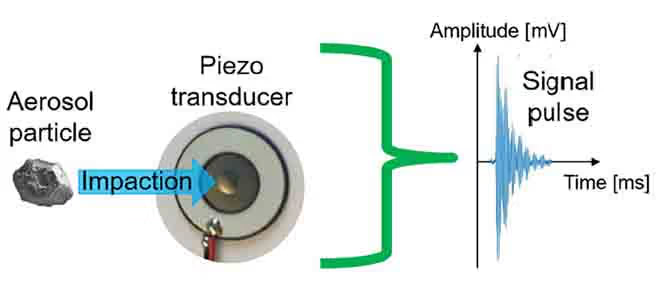Single Aerosol Particle Detection by Acoustic Impaction
Aerosol particles, solid or liquid, are suspended particles ranging in size from nanometers to several hundred micrometers, each possessing distinct properties that impact visibility, Earth's radiative balance, and human health. These particles are classified into modes based on their diameter: fine particles (<2.5 micrometers), commonly arising from human activities like combustion, and coarse mode particles (>2.5 micrometers), primarily formed through mechanical processes.
Fine aerosol particles can infiltrate the respiratory system and bloodstream, leading to cancer or organ damage, while coarse mode particles can compromise immune responses and trigger allergic reactions. High concentrations of these particles can also lead to hospitalizations and weakened immune responses, elevating the risk of respiratory diseases and nasal cancer through carcinogenic substance transport. They further impact air quality, visibility, and various aspects of climate dynamics, aggravating environmental degradation.
Understanding their impact relies on assessing their number and mass size distributions. However, current indirect measurement methods, like particle light scattering, filter deposition, and optical measurements, have limitations in assessing pollution data effectively.
The DustEar principle involves accelerating aerosols in a nozzle, where larger particles collide with a Piezo transducer, generating a signal proportional to particle mass. This direct correlation enables precise measurement without assumptions about particle composition or density. Its design minimizes airflow interference, ensuring accurate measurements and reduced noise levels, making it suitable for single, fine aerosol particle measurement.
The setup outlined in the study accelerates particles in a nozzle to achieve a precise final velocity tailored to their size, ensuring accurate measurement. Subsequent impact on a piezo transducer transfers the momentum, generating a signal proportional to particle mass. Testing with known particle size and density allows the calculation of real mass distribution while optimizing the impactor design to achieve a low cutoff diameter and high particle velocity.
Parameters yielding an optimal signal-to-noise ratio enable the detection of particles up to approximately 15 μm. Piezo transducer signals reflect energy transfer and radial oscillation damping, with ultrasonic frequency enhancing sensitivity to micrometer-sized particles. Calibration dust particles, consisting of silicon dioxide (SiO2) or polymethyl methacrylate (PMMA), validated the setup's proof-of-concept.
Measurements with the finalized impactor settings and selected piezo transducer demonstrated a linear relationship between particle mass and signal amplitude, further validated by calibration dust exhibiting similar correlation and error bars representing size distribution widths. The noise band indicated an estimated detection limit of about 50 picograms, corresponding to a particle diameter of approximately 5 μm, with electronics and data acquisition identified as the main sources of current noise slated for improvement.
In conclusion, the DustEar technique, with its ability to directly detect particle mass, finds applications across various domains. Its versatility extends from measuring pollen or volcanic ash mass to characterizing fog, ice crystals, and industrial processes like powder coating. It also aids drug quality control, apportionment studies, airbrushing applications, and studying mixed-phase clouds.
Future advancements, which include lowering the detection limit and exploring heat transfer characterization, can increase its utility. It is poised to revolutionize particulate matter monitoring networks, offering reliable insights into environmental and industrial settings.




